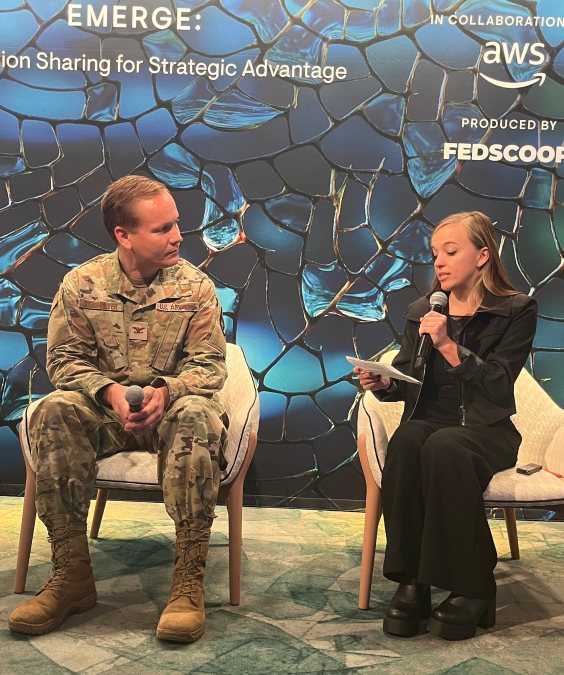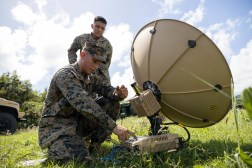What’s unique about the CDAO’s upcoming Global Information Dominance Experiment

The Pentagon’s next Global Information Dominance Experiment — GIDE 12 — will put the minimum viable capability for Combined Joint All-Domain Command and Control that officials have been collaboratively refining in recent years via this rapid experimentation series, to its most international test yet.
Roots of the Defense Department’s GIDE series trace back to 2020, but in 2022, it was revamped when Deputy Defense Secretary Kathleen Hicks tasked the Chief Digital and AI Office with strategically enabling technologies that could help realize the U.S. military’s nascent CJADC2 warfighting construct through the initiative. Each GIDE event is now leading up to a worldwide, joint activity where U.S. combatant commands and multiple international military partners collaboratively are expected to unleash next-generation command-and-control capabilities in late 2025.
“We’re in the middle of planning GIDE 12 right now, which is about 45 days away,” Col. Matthew Strohmeyer, an Air Force pilot and senior CDAO official overseeing the rapid experimentation effort, told DefenseScoop Thursday.
During a panel at a GDIT event produced by FedScoop in collaboration with AWS, Strohmeyer shed light on what his team has been learning in the latest GIDE iterations and shared new details about what to expect in the upcoming event.
“We’ve certainly had international partners join for the past several [experiments]. But for this one, we are going to be significantly expanding that,” he said.
During the last few iterations, the U.S. military’s Five Eyes partners — Canada, Australia, New Zealand and the U.K. — had to “watch from a distance,” Strohmeyer noted, due to what he said were technical challenges associated with sharing data.
But for GIDE 12, “we’re going to be able to technically integrate much more than we’ve ever been able to in the past — and, sometimes in an autonomous way, be able to share data between us, which we’ve not been able to do in the past. So, that’s exciting for us,” he said.
Broadly, this year his team has three “mission threads” they’re pursuing with GIDE.
“The first one is ‘global integration,’ or the ability for the Joint Staff and our allies and partners to see the world collaboratively and make decisions much more quickly than we were able to make in the past — and rather than a regional way, in a truly global way and truly digitized way,” Strohmeyer told DefenseScoop.
The second mission thread involves helping the military services enable joint kill chains, and the third encompasses driving improvements with allied and partner data-sharing.
It’s all meant to enable the minimum viable capability (MVC) they’ve developed for CJADC2 so far, which Strohmeyer said is performant but not yet perfect.
“Our goal is to significantly expand that out for GIDE 12, and also test it in a really robust operational environment to allow us to be able to see, can we achieve true global integration with some of those allies and partners against a very robust mission set, and can we actually do it in a way that’s performing and that’s ready for [current] operations?” Strohmeyer said.
He confirmed that several elements that contribute to the MVC have been fielded and are already “being used in real-world operations right now.”
Though he didn’t name the combatant commands participating or locations where it’ll all unfold, Strohmeyer repeatedly emphasized how the next GIDE will push that MVC further and be more global in nature than those that came before.
A key focus of GIDE 12, he noted, involves “a horrible military acronym” known as C5P — or Cross Combatant Command and Coalition Cooperative Planning.
“Essentially, it’s taking what is currently hundreds of people, sometimes thousands, and sometimes hundreds of thousands of man-hours, to be able to collaborate and come up with a slide that says, ‘This is what we’re going to do’ — and instead create a truly digital, in-minutes collaboration that can allow us to be able to get in in advance of our adversaries and hopefully deter a fight from happening. So that’s what we hope to do,” Strohmeyer told DefenseScoop.






